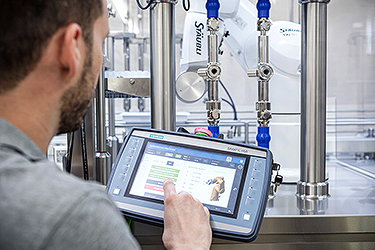Additive manufacturing and autonomous robotic printing

Manufacturing is witnessing incredible technological advancements. Additive manufacturing, also known as 3D printing, is advancing with reputable manufacturers who are implementing this innovation to promote the design, processing and printing of parts on-demand in real-time, accurately with repeatable quality.
Additive manufacturing revolutionizes both the process and product via the assistance of highly educated engineers working in collaboration with manufacturers to digitally consolidate, repair and simulate parts and processes in a revolutionary manner.
Moreover, these technological advancements are continuing in this arena with the expansion of other innovative developments.
Autonomous robotic printing
A recent article by Brent Donaldson, a Senior Editor of Additive Manufacturing magazine and newsletter, discusses a new path that additive manufacturing and assembly automation are treading via advanced autonomous robotic manufacturing. Mobile robots are used simultaneously to print a part, working in harmony in a unified order, resulting in 3D printing that’s scalable in both time and part size.
Each robot operates wirelessly through a transmitted code with an individualized task. Working in concert on a wired, tiled platform, powered by batteries and moving in multiple directions via power from the grid, the robots print from stationary positions. This enables distributed manufacturing, or the decentralizing of manufacturing, by coordinating multiple printing and machining facilities via modern information technology. Moreover, there’s no compromise to the stellar quality of material parts or the durability established with conventional additive manufacturing.
Also, with the capability to print on multiple materials, these robots provide fused deposition modeling (FDM) – a material extrusion innovation for 3D printing technology—known for its speed, accuracy and reasonable cost. And, the robots, themselves, are a product of 80 percent 3D printing, using SCARA-style arms and multi-directional wheels with Bluetooth capabilities guided by laser sensors. Companies like AMBots is the first to create this type of end-to-end solution.
All printing and sequencing of operations are coordinated among the multiple robots with commands to operate in the correct order without interference from each other or the 3D part being produced. Many algorithms are at play in this complex process, serving to balance print resolution, printing speed and cost.
Future forecasting shows plans to integrate this technology of automated multi-operational robots with the ability to pick up an object and place in the desired location for assembly, which further empowers the progression of autonomous manufacturing. Many industries show promising attention and backing to advance this objective.
For more in-depth information on this topic, please refer to Brent Donaldson’s article.
Other related topics:
What is additive manufacturing?
Siemens additive manufacturing demo
Siemens material extrusion
This concludes this blog on additive manufacturing and robotic, autonomous machining, with references from an article by Brent Donaldson, a Senior Editor of Additive Manufacturing online magazine and newsletter.


